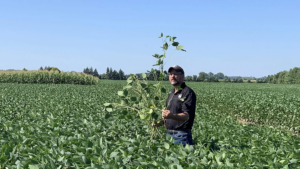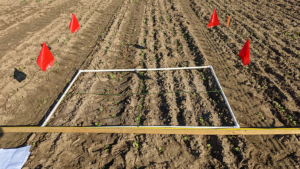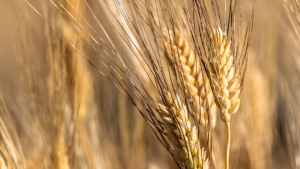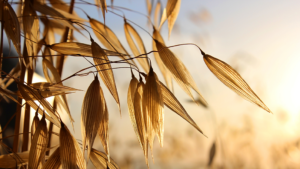Plant biosecurity
CONVERSATIONS WITH BUSINESS EXPERTS

(J.M.) WHY IS PLANT BIOSECURITY IMPORTANT?
(D.C.) Biosecurity is essential for all farms, including field crops, and is best described as a management practice to prevent, minimize or control pests. A biosecurity plan is all about being proactive and having a prevention plan in place instead of reacting to an outbreak.
Grain farmers face plant biosecurity pest risks like insects, bacteria, fungi, nematodes, and weeds that can pose serious threats to plant health and productivity.
Three key plant health biosecurity concepts include:
- Keeping pests out.
- If pests do arise, containing them to prevent the spread.
- Shutting down the problem as quickly as possible to reduce impact.
Pests can cause decreased productivity and increased costs, like managing herbicide-resistant waterhemp. Pests can also reduce the value of crop production due to decreased quality at the point of sale, like giberella in corn. Pest control measures can be complex, requiring farmers to consult outside experts especially in serious situations like resistant corn rootworm. And, worst case scenario, pests can limit export markets or even reduce property values.
WHAT PLANT BIOSECURITY PRACTICES SHOULD GRAIN FARMERS BE IMPLEMENTING?
When it comes to protecting plant health, farmers should focus on three key areas to minimize pest risks:
- Manage pest threats from people, vehicles and equipment.
- Implement robust production techniques that include sound agronomy and integrated pest management.
- Operation management practices that emphasize sanitation, work processes, records and employee training.
Building a plant biosecurity plan requires a system of continuously analyzing risks. Those risks will differ for every farm, so here are a few key biosecurity practices to follow.
Post signage. Clearly post biosecurity or no entry signage at gateways or at any area of a farm operation where you want to prevent access to visitors, including vehicles and equipment.
Control or restrict access. Vehicles and equipment are known to carry contaminants like weed seeds or nematodes in contaminated soil that could be embedded in wheel wells or undercarriage. Restricting access from fields and limiting vehicles to designated parking areas is important. Consider the external partners that access your farm yard and fields, like custom applicators, planting or harvesting equipment, mechanics, and crop scouts and make a plan to control their access to areas of the farm.
Crop rotation. Implement a crop rotation designed to disrupt pest cycles by seeding non-host crops. By rotating crops, farmers can also rotate crop protection chemistries to reduce selection pressure and developing resistance issues.
Scout regularly. Regular monitoring for pests is critical for early detection, management, and to prevent production losses. Understanding and using pest thresholds can help farmers make informed management decisions. Pheromone traps are a great tool to help with the early detection of mobile pests.
Sanitize. Regular washing of equipment can make a big difference in the movement of pests from yard to yard or field to field. Having a designated wash area where the wash water and potential contaminants can be contained is also helpful for incoming and outgoing equipment.
WHAT RESOURCES ARE AVAILABLE TO HELP GRAIN FARMERS BUILD A PLANT BIOSECURITY PLAN?
Farmers have access to a lot of advisors and resources that can help them implement biosecurity practices, assess their risks and develop a plan for their operations. I recommend starting with the biosecurity workshop currently offered by the Ontario Soil and Crop Improvement Association (www.ontariosoilcrop.org). These workshops are flexible in length and provide a self-evaluation checklist for farmers to assess their operation, help them understand what is working well, and identify areas for improvement. The workshop reviews critical concepts, provides examples, and offers opportunities to share ideas.
Additional resources can include Certified Crop Advisors, professional agrologists, and Ontario Ministry of Agriculture, Food and Rural Affairs specialists.
Building a plant health biosecurity plan is the first step to managing and preventing pests. I also recommend farmers review and update their plans because plant pests and associated risks are constantly changing. It is also important to share your plan with your family, staff and external farm partners to ensure everyone understands, supports, and implements it. •

























